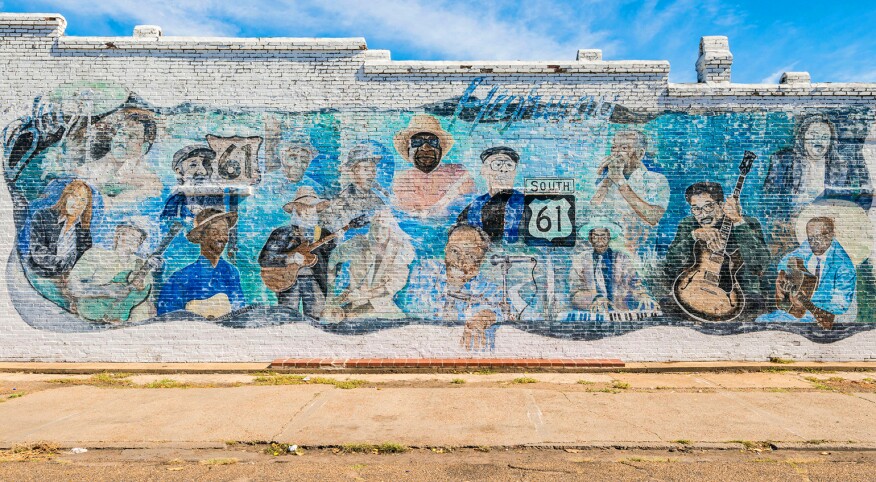The Mississippi Delta is the birthplace of the blues and, arguably, the birthplace of American music as we know it. Blues musicians from this area, both living and dead, continue to influence musicians in a variety of genres today. This makes the Blues Trail and Highway 61, the highway that runs from Jackson, Mississippi, to Memphis, Tennessee, one of the most important historic areas in the country. Still, this area is often overlooked as a tourist destination.
The best way to visit the Blues Trail is by car, either driving in from nearby cities or flying into the major metropolitan airports on either end. Though Memphis has the larger airport, starting in Jackson will give visitors a real sense of the trajectory that many musicians took to become icons of American music.
While in Jackson, be sure to visit the Mississippi Civil Rights Museum and the Medgar Evers Home Museum to get a sense of the rich history this city has to offer. Wander down Farish Street in the center of town. Once a thriving area for nightclubs and other Black-owned businesses, the neighborhood fell on hard times during the 1970s, like many areas in the South. They’re in the process of rebuilding and businesses like Johnny T’s Bistro & Blues and F Jones Corner are reviving the tradition of late-night blues in one of the cities where it all started.
Head north from Jackson on Highway 49 to Indianola, the birthplace and final resting place of one of the most famous blues musicians, B.B. King. The B.B. King Museum is the major draw here. It chronicles not just the life of the famous guitarist, but also the extraordinary times that he lived in, starting as the son of a sharecropper in rural Mississippi in the 1920s and moving all the way up to his death in 2015. His gravesite is also on the grounds for those who wish to pay their respects.
Both Greenwood and Greenville are only about thirty minutes away from Indianola, but in opposite directions. In Greenville you can visit the Winterville Mounds and Museum, remnants of ancient villages built by the indigenous people of the area, and have dinner at Doe’s Eat Place, the most low-key James Beard award-winning restaurant you’ll probably ever have the pleasure to visit. Or stop at the gravesite of Robert Johnson, the blues musician who supposedly sold his soul for fame, and spend a night at the elegant Alluvian hotel in quaint downtown Greenwood. If you have time, visit both!
Continuing north, visit Clarksdale, a whole town dedicated to the blues. Both the Deep Blues Festival and the Juke Joint Festival are held here every year near the Delta Blues Museum, which is also worth a look. The main attraction in Clarksdale, though, is seeing a show at Red’s Lounge. Red’s is one of the last remaining examples of what used to be referred to as a “juke joint,” a small, locally owned, hole in the wall where blues musicians plied their trade before moving on to larger cities and, occasionally, the world. Red’s is cash-only and the drink selections are limited, but the atmosphere can’t be beat.
Finally, in Tennessee make sure to set aside a few days to spend in Memphis before heading home. If you can swing it, book a room at the historic Peabody hotel, built in 1925. This hotel is considered one of the most beautiful hotels in the South. Even if you don’t get to stay here, try to pop into the lobby around 11 a.m. or 5 p.m. to witness the duck parade, where local ducks are led from the roof of the hotel down into the lobby’s fountain. Memphis would have been considered the big city to musicians hoping to make it on a national scale. Beale Street, in the heart of town, still stands as a testament to this and music can be heard here nearly every night of the week.

Alamy









